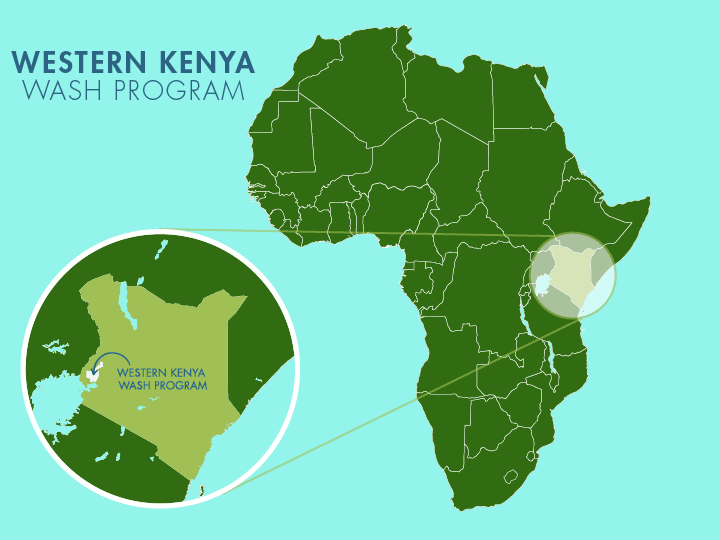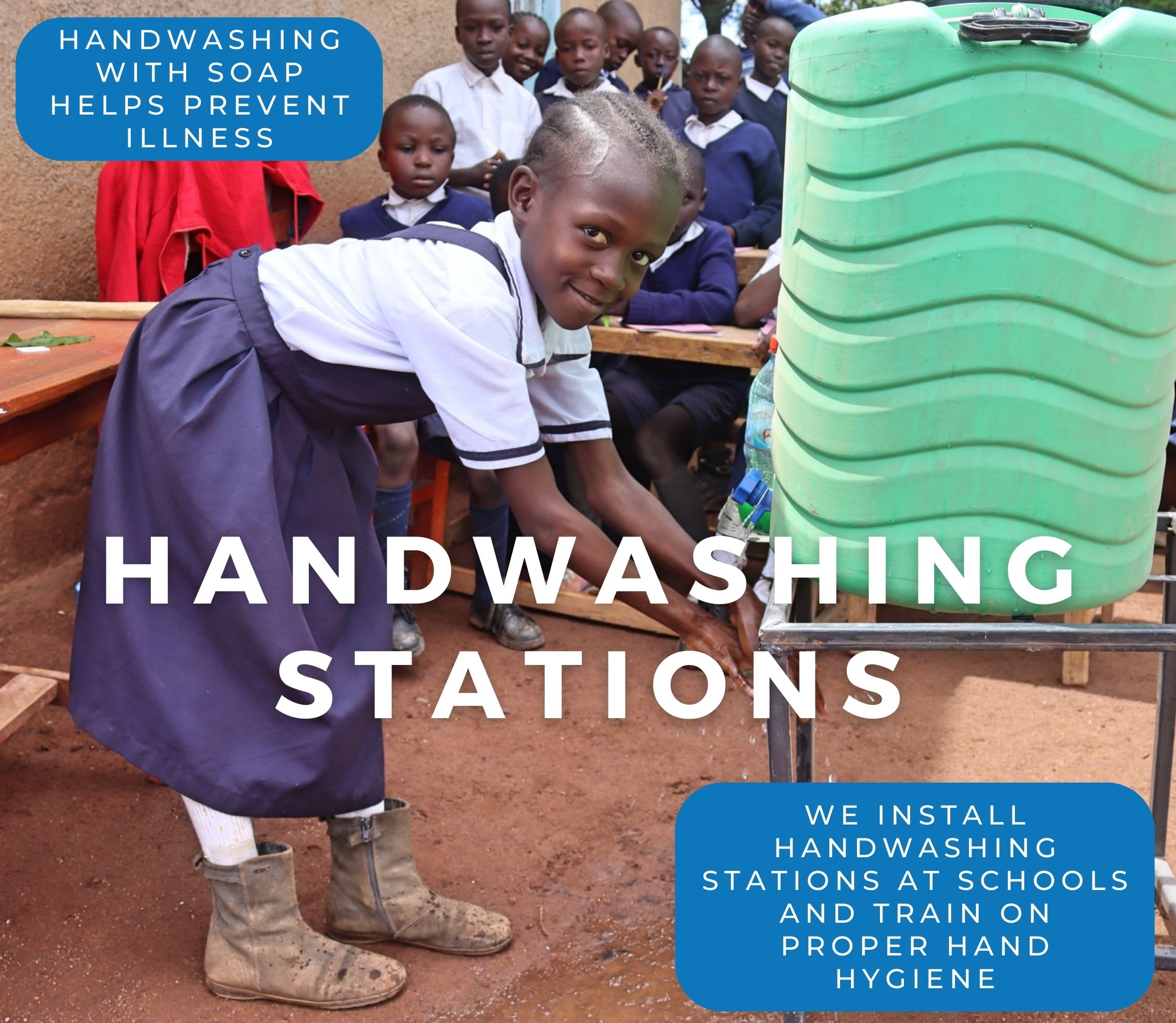The staff at Shirakalu Dispensary treats an average of 100 patients a day. It is a huge task for the six staff members, and without access to clean, sufficient water, it can be overwhelming.

The clinic.
Currently, the clinic relies on a rain tank that collects water during the rainy season. It is helpful, but it leaves them without water for much of the year. The tank often runs dry, even during rain, since the surrounding community also draws from it when they are desperate for water.
Morgan Musingu, a 35-year-old nurse at the center, provided his insight.

"Water is a very critical component in our work. We need water for every action [in] this facility, from cleaning, cooking, [and] medication, among others. Without water, the facility can be closed, so water is life - water is running life literally," said Nurse Musingu.
The lack of water has an impact on daily operations and the level of patient care that can be provided.
"Sometimes the meals are prepared late if the one who brings water to us is not around. But our primary goal is to ensure there is [a] little water for medication and medical services. Some of the activities that require plenty of water, an example, cleaning, [are] sometimes delayed when we encounter [a] water shortage experience," he said.
"Prolonged drought is the major cause of water shortage in our institution. During that time, even [the] community sneaks in to collect water, and the tank has a small capacity, not sufficient to serve both the community and the facility. The water from the tank is not sufficient to [serve] us throughout the year. We have to supplement it with spring water, which is quite a distance," he continued.

The insufficient rain tank.
When the tank is dry, the community spring, which is 30 minutes away, is the only other option. Since staff are consumed with caring for patients, they must hire someone to collect and deliver water. Unfortunately, this often causes more problems than it solves.
First, with limited financial resources, this extra cost strains the center's budget. At times, when the monthly stipend is spent, the staff have to use their personal finances to supplement the budget because they can't work without water.
"We are sometimes forced to buy water using our finances to ensure the facility continues to run. Sometimes, I really struggle as the [one] in charge of this facility when there is no water; everyone expects a solution from me. We hire someone to fetch water from a nearby spring, especially in the drought season, to bring about 100 liters of water. She carries 20-liter jerricans," he said.

The spring where water is collected.
The next concern is the quality of the collected water. It puts those who consume it at potential risk of contracting water-related illnesses; however, without an alternative, no one has a choice but to take the risk.
"The spring is not well taken care of, as much [as] we trust the one who is bringing water to us, we [are] not really sure of [the] handling," shared Mr. Musingu.
The staff is doing their best with what they have, but the lack of water is a problem. The clinic plans to add a maternity wing for much-needed services to the community, but the lack of water has been a delaying factor.

Nurse Musingu at the spring.
"Right now, we're somehow managing because we don't have inpatient services. We ensure we have little water for medication and services. The main challenge will arise when the maternity wing will be in operation," Mr. Musingu shared.
We hope to install a well that will make a difference, so the clinic's future can be different. With clean water on the property, patient services could expand, daily care would improve, and the finances used to pay for water delivery could be reinvested.
Steps Toward a Solution
For health care settings, immediate access to a large quantity of clean water is crucial for handwashing, sterilization of equipment, cleaning, and safe childbirth. Water that is off-site creates delays, impacts patient care, and increases the risk of hospital-acquired infections.
Our coverage goals aim for all health centers to have an on-premises water source that will sufficiently serve the patients, healthcare providers, and staff to ensure accessibility, reliability, and safety. With more water available, healthcare workers do not have to ration water, worry about purchasing water with their limited funds, or make tough decisions about when to wash their hands or equipment.
Reliable, clean water ensures that healthcare workers have sufficient water so they can provide excellent patient care!
Our technical experts worked with the health center leadership and the local community to identify the most effective solution to their water crisis. They decided to drill a borehole well, construct a platform for the well, and attach a hand pump.
Well
Abundant water often lies just beneath our feet. Aquifers—natural underground rivers—flow through layers of sediment and rock, offering a constant supply of safe water. A borehole well is drilled deep into the earth to access this naturally filtered and protected water. We penetrate meters, sometimes even hundreds of meters, of soil, silt, rock, and more to reach the water underground. Once found, we construct a platform for the well and attach a hand pump. The community gains a safe, enclosed water source capable of providing approximately five gallons of water per minute. Learn more here!
Handwashing Stations
Alongside each water source, we install two gravity-fed handwashing stations, enabling everyone at the health center to wash their hands. Handwashing is crucial for preventing water-related illnesses within the health center and community. Health center staff will maintain the stations, fill them with water, and supply them with soap, which we often teach them how to make.
Latrines
We ensure there are Ventilated Improved Pit (VIP) latrine blocks that effectively prevent the transmission of fecal diseases. Each latrine will boast a durable cement floor for easy use and maintenance. We’ll ensure at least one stall is reserved for staff, along with gender-separated toilets that include menstrual hygiene facilities and accessible options for individuals with limited mobility.
Health Care Staff and Community Education & Ownership
Hygiene and sanitation training are integral to our water projects. Training is tailored to each community's specific needs and includes key topics such as proper water handling, improved hygiene practices, disease transmission prevention, and care of the new water point. Safe water and improved hygiene habits foster a healthier future for everyone in the community.
Encouraged and supported by the guidance of our team, a water user committee representative of the community's diverse members assumes responsibility for maintaining the water point, often gathering fees to ensure its upkeep.

 Borehole Well and Hand Pump
Borehole Well and Hand Pump
 Rehabilitation Project
Rehabilitation Project




















